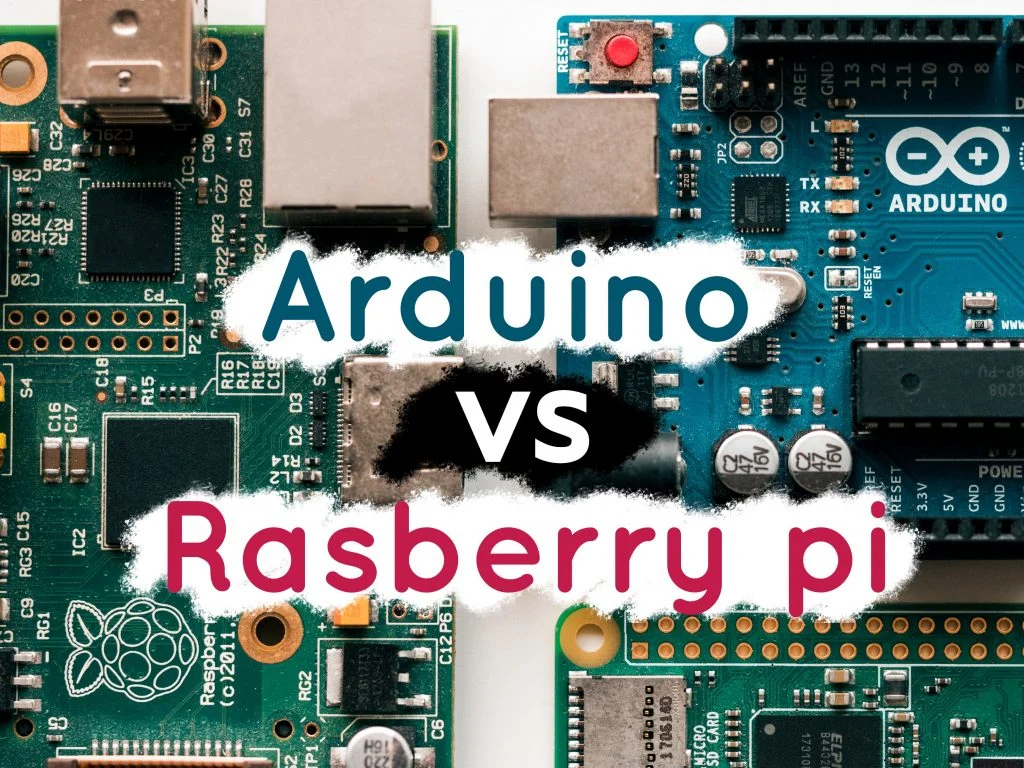
Arduino and Raspberry Pi are two popular but different platforms used in the field of electronics and computing. Both Arduino and Raspberry Pi are fantastic platforms for learning and creating exciting projects.
Here’s a comparison between Arduino and Raspberry Pi:
Arduino :
1.Microcontroller-Based:
Arduino primarily a microcontroller platform. It uses microcontrollers like the ATmega series to control hardware in real-time.
2.Real-Time Control:
Arduino well-suited for projects that require real-time control of hardware, such as robotics, sensors, and embedded systems. It can respond quickly to inputs and generate precise outputs.
3.Simplicity:
Arduino uses a simplified programming environment that is easy to learn, making it ideal for beginners and educational purposes.
4.Low Power Consumption:
Arduino boards designed for low power consumption, which makes them suitable for battery-powered and energy-efficient applications.
5.Limited Computing Power:
Arduino lacks the processing power and resources for complex computing tasks, graphical user interfaces, or running a full operating system.
6.I/O Pins:
Arduino boards typically have a range of digital and analog input/output pins, which can be used to interface with sensors, actuators, and other hardware components.
Raspberry Pi :
1.Single-Board Computer:
Raspberry Pi is a single-board computer with a complete operating system (usually Linux) and a wide range of I/O options.
2.General-Purpose Computing:
Raspberry Pi suitable for general-purpose computing tasks, including web browsing, software development, media playback, and more. It can run a variety of applications and services.
3.Flexibility:
Raspberry Pi used for a wide range of projects, including desktop computing, IoT, home automation, and educational purposes. It can handle diverse tasks with ease.
4.Higher Power Consumption:
Raspberry Pi boards consume more power compared to Arduino, which might not be suitable for battery-powered projects without additional power management.
5.Rich Connectivity:
Raspberry Pi boards come with HDMI, USB ports, Ethernet, Wi-Fi, Bluetooth, additionally, GPIO pins, providing extensive connectivity options for various peripherals and devices.
6.Community and Ecosystem:
Raspberry Pi has a large and active community with extensive online resources, software support, and a wide range of compatible accessories and add-ons.
In summary, if your project requires real-time control of hardware or is focused on embedded systems and electronics, Arduino is the better choice. However, if you need a general-purpose computer with more processing power and the ability to run a full operating system for tasks like web browsing or running complex software, then Raspberry Pi is the preferred option. Your choice depends on your specific project requirements and goals. Some projects even combine both platforms, using Arduino for hardware control and Raspberry Pi for higher-level processing and connectivity. Please Visit Raspberry Pi Site:
Locus Academy has more than a decade experience in delivering the training, Staffing on Arduino v/s Raspberry Pi for corporates across the globe. The participants for the training, Staffing on Arduino v/s Raspberry Pi are extremely satisfied and are able to implement the learnings in their on going projects.


